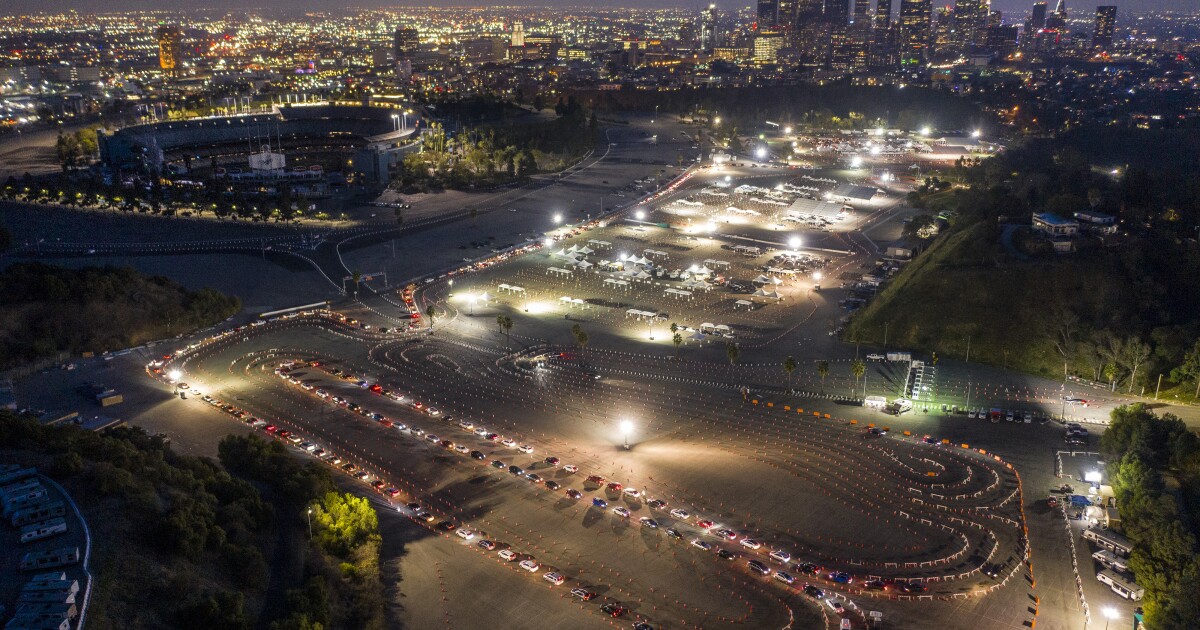The COVID-19 mortality rate among LA County Latino residents remains three times the rate of white residents, even with the end of the winter wave.
The average COVID-19 death rate among Latinos in LA County peaked in mid-January with a daily rate of 48 deaths per 100,000 Latino residents, three times worse than the rate of white residents, which was 16 deaths per 100,000 residents, according to data released last week.
Black residents in mid-January were dying from COVID-19 at a rate of 23 deaths per 100,000 residents; among Asian Americans, the rate was 20 per 100,000.
“When we look at mortality rates by race and ethnicity … once again, our Latinx community is enduring the worst of the pandemic,” said LA County public health director Barbara Ferrer at a news conference announcing county data.
At the end of January, average daily mortality rates for all races and ethnicities dropped – but fell more slowly for black and Latino residents.
For the 14-day period ending January 30, the average daily COVID-19 mortality rate for Latinos in LA County was 33 per 100,000 residents; this is three times the number of white and Asian American residents, who were dying at a rate of 11 per 100,000 residents. Black residents were dying of COVID-19 at a rate of 14 per 100,000 residents.
“White and Asian residents saw a more significant decline than that experienced by black and Latino residents,” said Ferrer. “Although the cases may be decreasing, this does not mean that the issues of racism, lack of resources and greater risk of adverse results have disappeared. In fact, these factors still prove to be contributing factors to the disproportionalities that we continue to observe in all our reports ”.

Latino residents of LA County were still dying at triple the white resident rate of COVID-19 at the end of January.
(Los Angeles County Department of Public Health)
The COVID-19 death rate among residents of the poorest areas of LA County in mid-January, the peak of the pandemic, was four times worse than for residents of the wealthiest areas of the county, according to the data. released last week.
The average daily mortality rate of COVID-19 at that point among those who lived in the poorest areas of LA County peaked at almost 60 deaths per day for every 100,000 residents, while the rate in the wealthiest areas was around 17 deaths per day for 100,000 residents.
At the end of January, the disparity still existed: those living in the poorest areas of LA County were dying of COVID-19 at a daily rate of around 35 per 100,000 residents, almost three times the rate of residents in the wealthiest areas. , where the COVID-19 mortality rate was around 12 per day per 100,000 residents.
“Since the beginning of the pandemic, COVID-19 has been devastating for people living in low-resource areas, where there are more people living in poverty,” said Ferrer.

People living in the poorest areas of LA County are dying of COVID-19 at a daily rate almost three times that of residents of the wealthiest areas.
Low-income areas are highly susceptible to the spread of coronavirus because of dense housing, overcrowded living conditions and a greater proportion of essential workers who cannot work at home. Authorities believe that people get sick at work and then spread the virus to family members at home.
Latino and black California residents and people with a high school education experienced one of the biggest increases in deaths during the pandemic, according to an analysis by UC San Francisco researchers.
California counties with a higher proportion of low-wage families and settlements have been hardest hit by the pandemic, according to a study by the UC Merced Community and Work Center. And Latino workers have the highest employment rate in essential frontline jobs, where there is a greater risk of exposure to coronavirus, according to the UC Berkeley Work Center.
For example, 55% of Latinos work in these jobs and 48% of black residents, compared to 35% of white residents.
